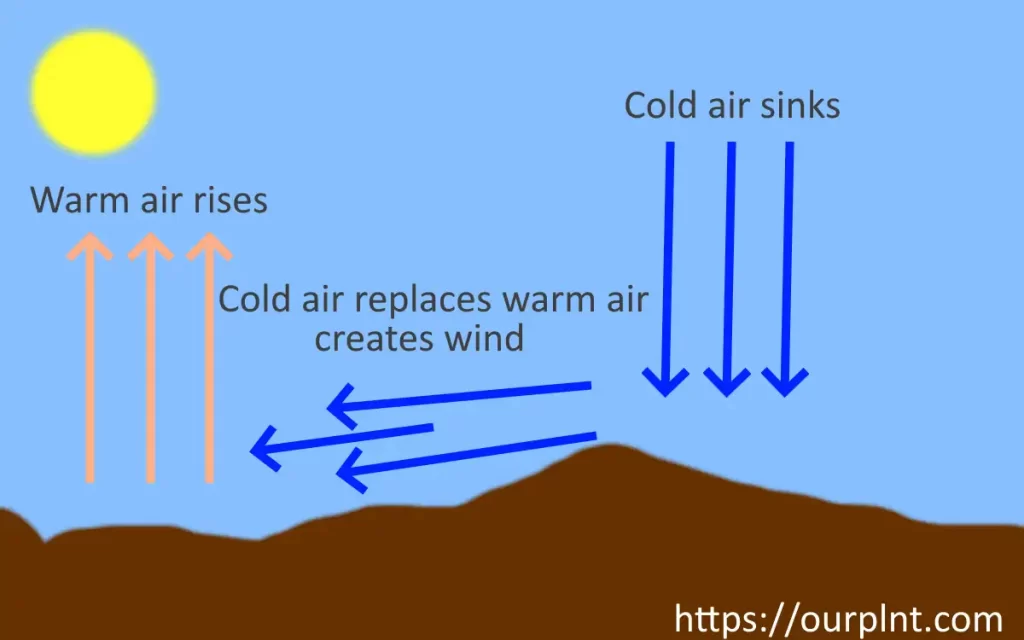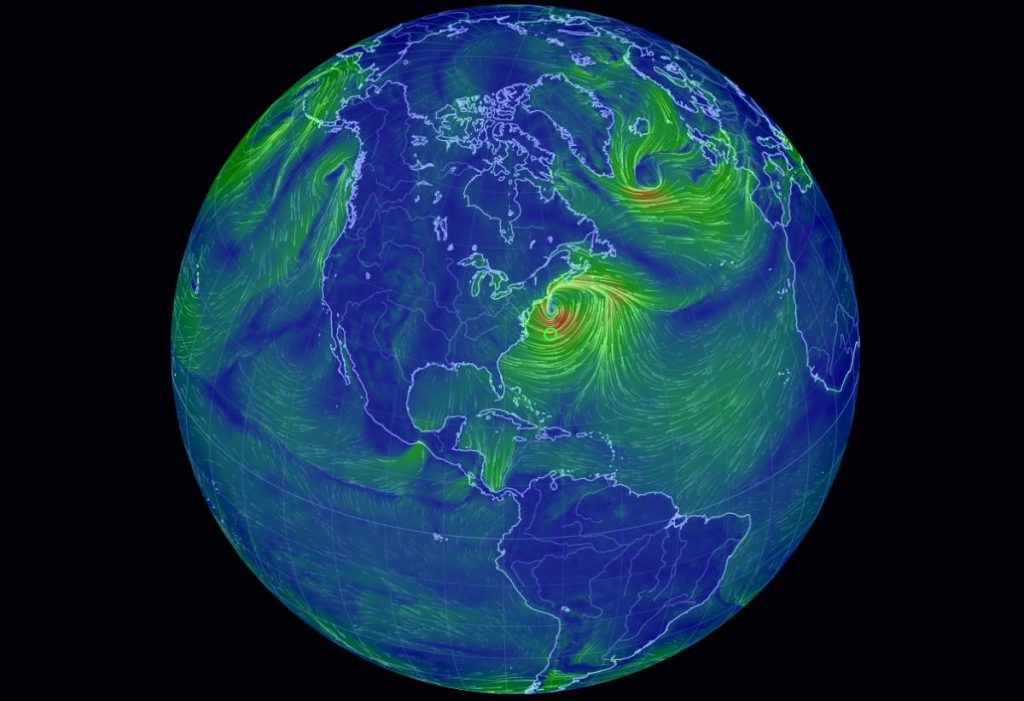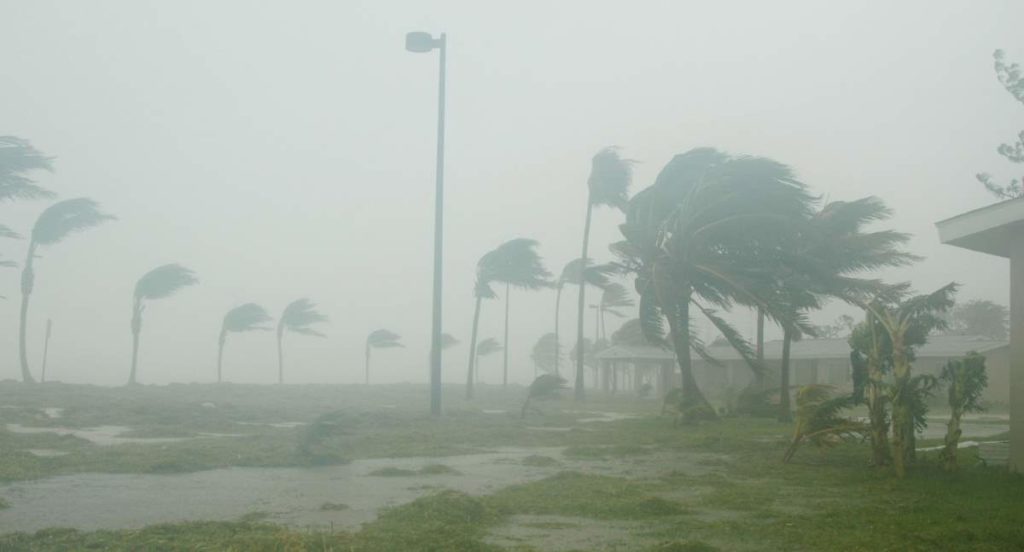The wind is caused by the differences in air pressure. These atmospheric pressure differences are created by the uneven heating of the Earth (or any planetary body which have an atmosphere, see notes 1) by the Sun.
Why does the wind blow?
So, in a nutshell:
- The weight of the air (the mixture of various gases in the Earth’s atmosphere) creates the air pressure.
- When the molecules that create the atmospheric gases are warmed by the Sun, they move with this extra energy: they spread out, and as a result, their density, or in other words, their specific gravity decreases and they rise up
- As warm air rises up in the atmosphere, their atmospheric pressure decreases. This creates a “low-pressure” area.
- When the gas molecules are cold, they do the exact opposite: they get denser, they sink down in the atmosphere, the weight of (now denser) air pushes down on the Earth’s surface a bit harder and this creates a high-pressure area.
- The Sun doesn’t heat all the Earth equally. So there are many high-pressure and low-pressure areas all over the planet.
- Air flows from an area of high pressure to low pressure. In other words, the cold air replaces warm air.
- This air movement creates the wind.
- The strength (or speed) of the wind depends on the differences in temperature and pressure between the warm an cool air.

The wind is a part of weather that we’ve all experienced at one time or another. And whether it’s a welcome breeze on a hot day or a destructive gust during a storm, it all starts in the same way: differences in air pressure.
What is the fastest wind speed recorded on Earth?
Scientists at the World Meteorological Organization confirmed that the 253.5 mph (408 km/h) wind gust achieved during Tropical Cyclone Olivia on April 10, 1996, sets the world record for the highest surface wind speed on Earth.
Olivia was formed on 3 April 1996 to the north of Australia’s Northern Territory.
Before that, for nearly 62 years, Mount Washington, New Hampshire, US held the world record for the fastest wind gust ever recorded on the surface of the Earth: 231 mph (371.75 km/h), recorded April 12, 1934, by Mount Washington Observatory staff.
The fastest wind speed in the Universe
If you think the winds of Cyclone Olivia were fast, think again: on an exoplanet named HD 189733b which is approximately 64.5 light-years away, estimated wind speeds can reach around 5,400 mph (8,690 km/h), which is more than seven times the speed of sound.
HD 189733b is thought to be tidally locked to its parent star, meaning it has a permanent day and night.
This creates huge differences in temperature between the night-side and day-side of the planet. So incredible fast winds blow from the dayside to the night side.
Observations of this planet have also found evidence that it rains molten glass!
Notes
- For example, Neptune’s winds are the fastest in the solar system, reaching up to 1,500 miles per hour (2400 km/h)!
Sources
- Wind on Wikipedia
- Wind on the National Geographic website
- Why does the wind blow? on the scijinks website
- What causes windy weather? on The Conversation
- HD 189733 b on Wikipedia
- Space Shuttle Endeavour’s Touchdown Meets Columbia’s Salute [An amazing photo from the past] - February 29, 2024
- Moon Landings: All-Time List [1966-2024] - February 23, 2024
- From Orbit to Ordinary: 10 Earthly Applications of Space Technology - January 23, 2024



